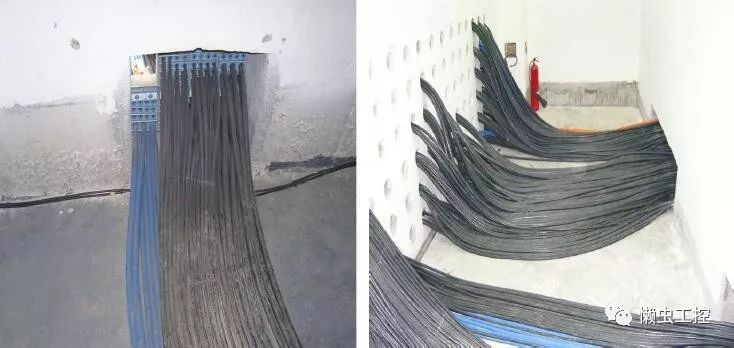The DCS control system of a chemical plant is composed of system software, hardware, and on-site instruments. Any problem in any one of these links will result in the failure of some of the functions of the system or the failure of the control system. In severe cases, the production plant will stop. Therefore, all devices that make up the control system must be considered as a whole and comprehensive maintenance management should be carried out. The routine maintenance of the DCS control system mainly includes: control room management, hardware management of the operator station, operator station software management, operator station inspection, control station management, control station inspection, and communication network management. Control room management 1. Seal all routing holes (pits) that may introduce dust, moisture, rodents, or Other harmful insects; (such as overhead control line in control room, sealed module through cable wall, etc.) 2. Ensure stable operation of air-conditioning equipment and ensure that the room temperature changes less than 5°C/h to avoid condensation on the system equipment due to rapid changes in temperature and humidity; [According to HG/T20508, "Control room should be controlled by temperature and humidity. The room temperature in the operating room, cabinet room, and engineer room should be: winter 20°C±2°C, summer 26°C±2°C, temperature change rate less than 5°C/h; relative humidity should be: 40%~60%, humidity The rate of change is less than 6%/h.â€] 3. Avoid using radio or mobile communication devices in the control room to avoid interference with electromagnetic fields and radio frequencies. 4. H2S in the control room is less than 10ppb, SO2 is less than 50ppb, and Cl2 is less than 1ppb. [According to HG/T20508, the concentration of dust less than 10μm in the air should be less than 0.2mg/m3; the maximum allowable concentration of harmful substances in the air should meet the following requirements: H2S is less than 0.01mg/m3; SO2 is less than 0.1mg/m3; Cl2 is less than 0.01mg/m3]5. Access authority, key management. Operator Station Hardware Management 1. Keep it clean, anti-grey and waterproof; 2. It is forbidden to modify or disassemble the machine without permission; 3. The keyboard and mouse must be operated with proper force, gently and gently, to avoid sharp objects scratching the surface; 4. To avoid electromagnetic interference on the monitor To avoid moving the IPC, monitors, etc., to avoid pulling or bumping the equipment connecting cables and communication cables. 5. Keep the monitor away from heat and ensure that the display's ventilation openings are not obstructed by other items. 6. Before connecting or removing the monitor, make sure the computer's power switch is off. 7. Clean the monitor regularly with a damp sponge. Connected, dismantled or moved the operator station host with the power on; 9. The operator station host power grounding wire should be connected with the working place of the system to reduce the interference; 10. The filter of the operator station host should be cleaned frequently. Operator Station Software Management 1. The use of non-genuine Windows software is strictly forbidden; 2. The operator is forbidden to exit the real-time monitoring; 3. The operator is forbidden to arbitrarily modify the configuration settings of the computer system; it is forbidden to randomly add, delete or move files and directories on the hard disk; 4. System maintenance personnel Be careful to use foreign floppy disks or CDs to prevent virus intrusion. 5. It is forbidden to perform unnecessary multitasking operations on the real-time monitoring operation platform. 6. The system maintenance personnel should make backup of the control subdirectory files, and control the PID parameters of the respective loops. , Regulator positive and negative effects such as system data recording work; 7. System maintenance personnel make necessary changes to the system parameters, it should do a good job in recording. Operator station inspection 1. Whether the host, monitor, mouse, keyboard, and other hardware are in good condition; 2. Real-time monitoring work is normal, including data refresh, each function screen (mouse and keyboard) operation is normal; 3. View fault diagnosis screen, whether there is a fault prompt . Control station management 1. It is forbidden to modify or disassemble the system components without permission; 2. Do not pull the cage to pull the cage; 3. Do not pull the grounding wire; 4. Avoid pulling or bruising the power supply line; 5. Lock the cabinet door. 6. Regularly clean the control station fan filter. Control station inspection 1. Whether the card is working properly, whether there is fault display (check the indicator), and 2. Whether the DC power module works normally. 3. The grounding cable is securely connected. Communication Network Management 1. Do not pull or injure the communication cable. 2. After the system is powered on, the connector of the communication cable cannot collide with the conductor such as the cabinet. The communication cables and communication connectors that are redundant can not touch each other, so as not to burn out the communication network card. A lot of friends gave messages to the Slacker Industrial Control WeChat public number to inquire about self-control instrument failures. Thank you for your attention. Some of the questions were not answered in a timely manner to you. We regret that it is recommended that you join the Slacker Industrial Control QQ Group. Solve your problems in a timely manner. DMR Digital radios,Motorola Two Way Radios,Motorola Talkabout Radios,Motorola Handheld Radio Guangzhou Etmy Technology Co., Ltd. , https://www.digitaltalkie.com

March 17, 2023